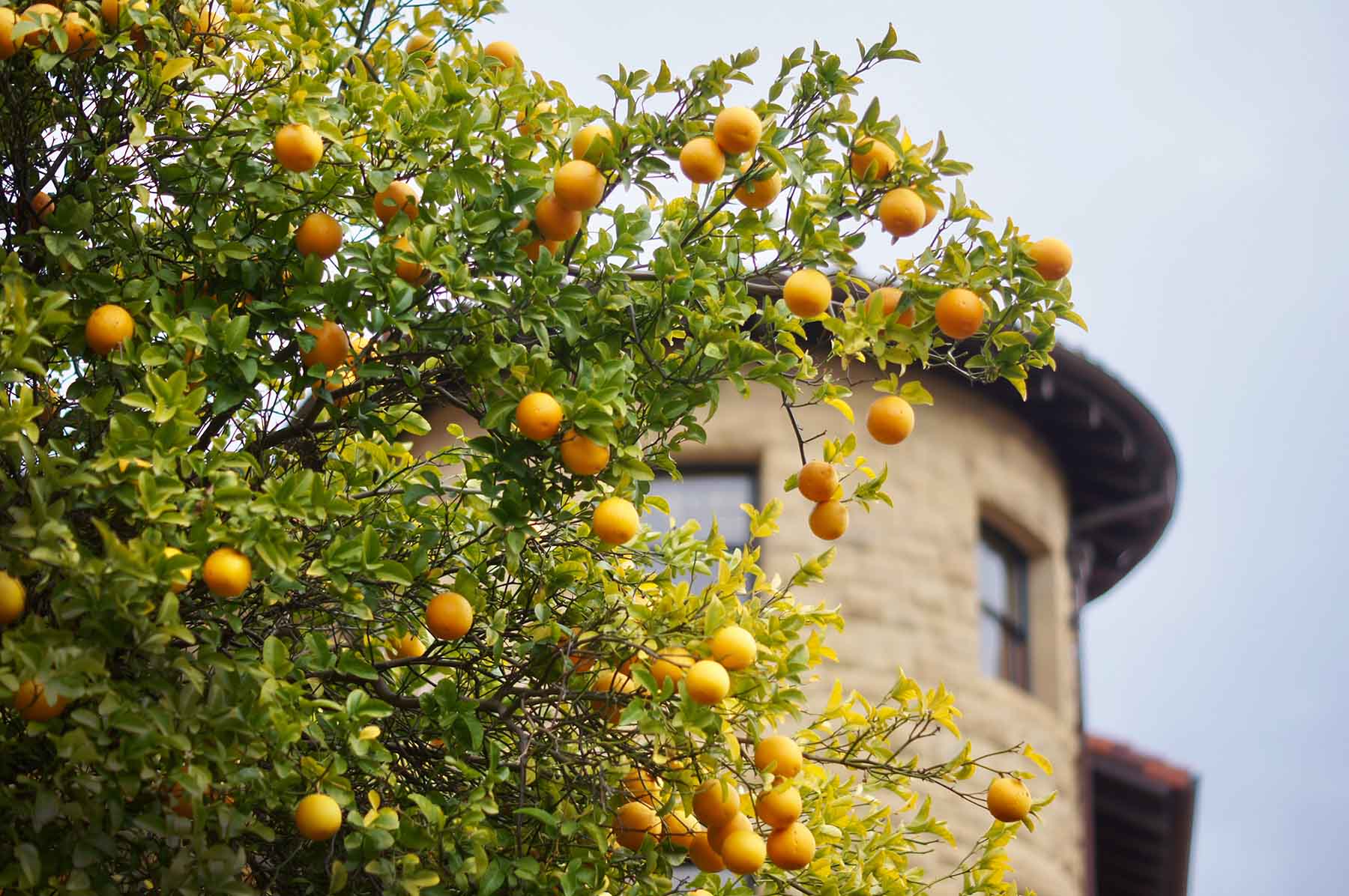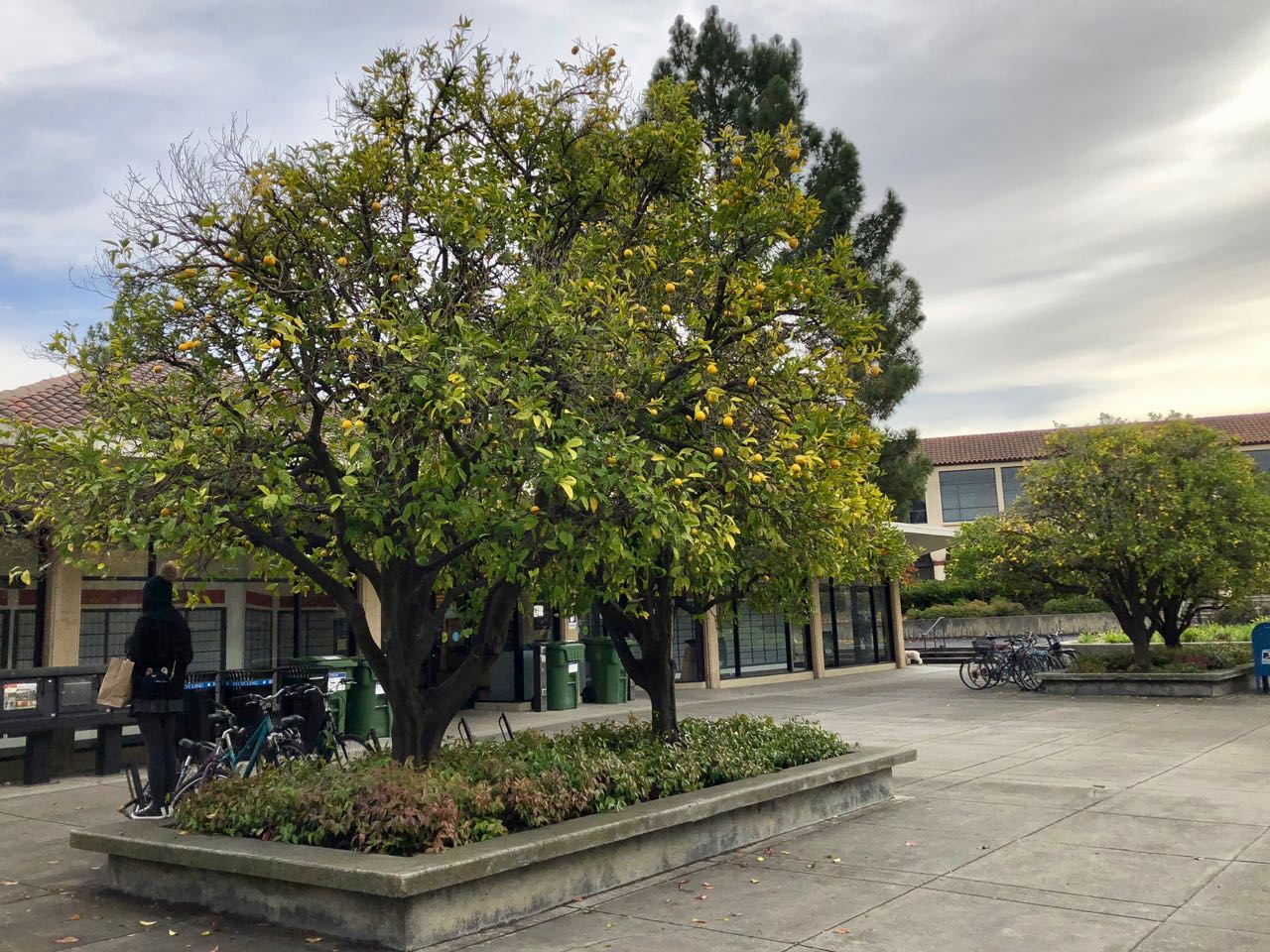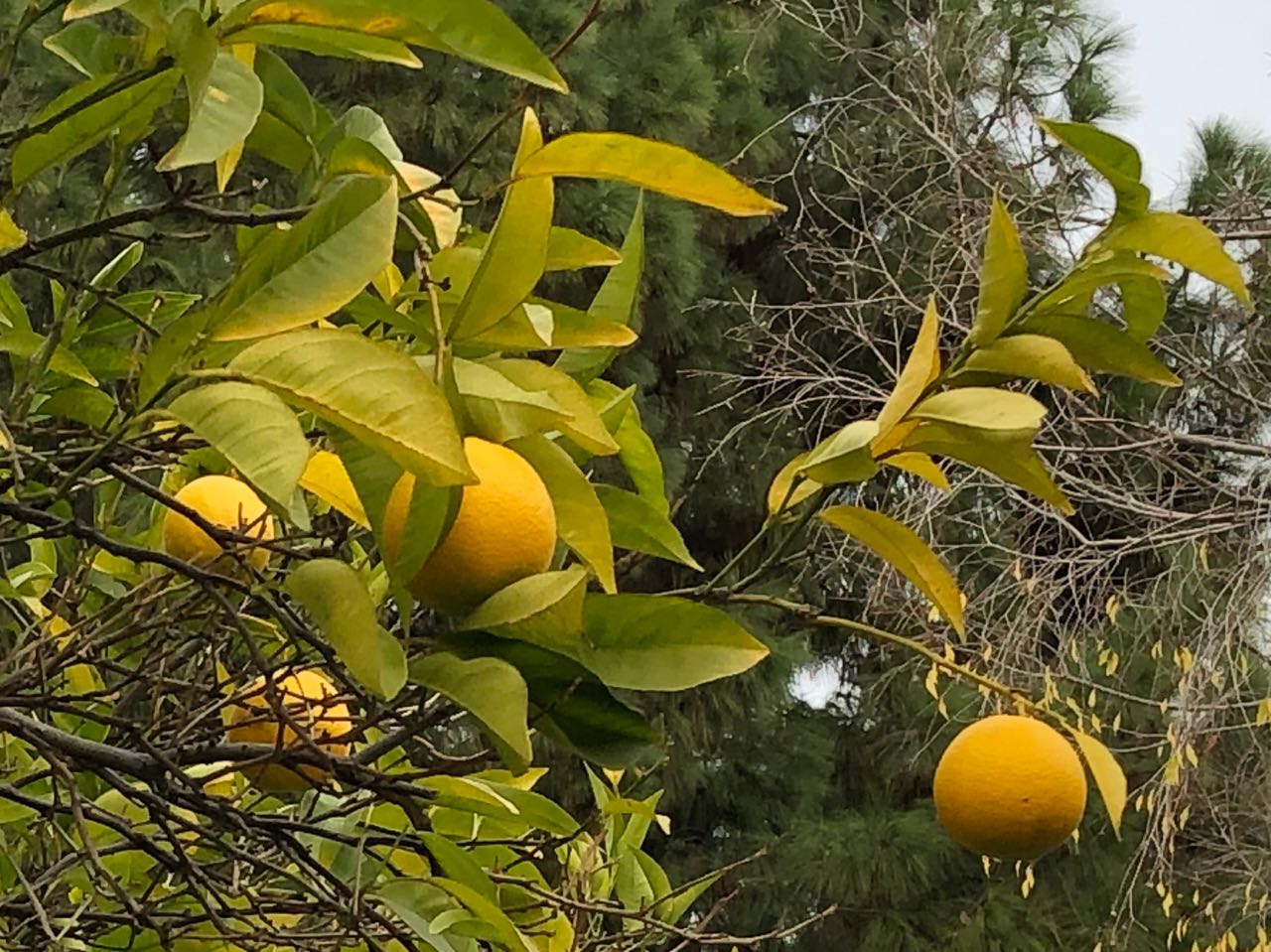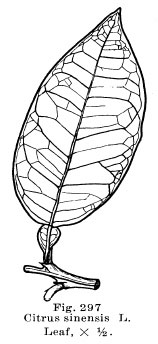Citrus Notes


Various species names have been given to citrus trees in the course of time but they are of no use in ordering from a nursery. Practical identification is done in terms of varietal names, which are far too numerous to list, and in any case only a limited selection is available in a given area. Several oranges, varieties associated with C. sinensis, especially ‘Valencia’, are grown in home gardens. ‘Meyer’ lemons, which are not as acid as the ‘Eureka’ lemons sold in stores, are also popular in homes, as are grapefruit (C. paradisi), kumquats (C. japonica, syn. Fortunella margarita), mandarins (C. reticulata), and limes (C. aurantifolia). There are oranges in two planters at the Post Office, kumquats behind buildings 20 and 40, and other citrus including lemons in Citrus Court (northeast corner of Outer Quad) and in other Quad spaces. Grapefruit, and possibly limes and mandarins, are also growing in private gardens. The citron Buddha’s Hand (Citrus medica var. sarcodactylis) grows in Citrus Court, on the patio leading to the entrance to Building 200. Its fruit extends out into a number of finger-like segments of all rind and no pulp. The small tree is not frost tolerant.

Oranges are probably native to Southeast Asia and did not reach Rome until the 4th century. The lime (C. aurantifolia), credited with combating scurvy at sea in the hands of Captain James Cook, is also thought to have originated in Southeast Asia. The lemon (C. limon) arrived in the Mediterranean at the beginning of the second millennium, and can be traced back to northern India. The grapefruit (C. paradisi) was said to have originated in Jamaica. On the other hand, the shaddocks (pomelo, C. maxima) taken to the West Indies by Captain Bligh were thought to be native to the South Pacific, but were named for Captain James Shaddock for having smuggled it from Southeast Asia. The kumquat comes from southern China. The horticultural development of the citrus group has evidently obscured the actual geographic origins. For cultural information visit http://fruitsandnuts.ucdavis.edu.
Sometimes etymology tells what our ancestors thought about botanical origins. The word orange traces back through French to Provençal auranja to Arabic nāranj to Persian nārang to Sanskrit nāraṅga to Dravidian territory and is remembered in modern Tamil by the word naṟu meaning sweet. What is now an orange should have been a norange. We get the word mandarin from Portuguese mandarim, from Malay mĕntĕri, from Sanskrit mantrin = counselor; hence the relationship to the Chinese official and the sacred mantra. Lemon comes to us via French from Arabic laymūn. What the Pilgrim Fathers thought came from Turkey, and the French thought came from India (la dinde) in fact came from America; etymology is more a hobby than a science. Kumquat is from Cantonese kam = gold, quat = orange, while loquat (which is a member of the Rose not the Cirtus family) is from lō-kwat, which means rush orange.
About this Entry: The main text of this entry is from the book Trees of Stanford and Environs, by Ronald Bracewell, published 2005. John Rawlings subsequently added the note on Buddha’s Hand citrus. Sairus Patel clarified the location of the Buddha’s Hand (Feb 2020).




